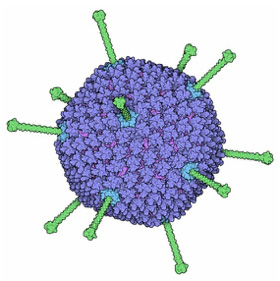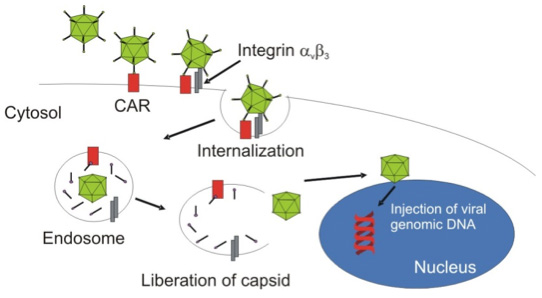views

Adenovirus Antigens
Adenoviruses are members of the family Adenoviridae. They are first isolated in the adenoid tissue–derived cell cultures in 1950s, hence the name. This kind of DNA viruses are classified according to 3 major capsid antigens: hexon, penton, and fiber. Adenoviruses are very ubiquitous in humans and other broad range of vertebrate hosts. Over 50 distinct adenoviral serotypes have been identified to cause various diseases in human, including mild respiratory infections, cystitis, gastroenteritis, keratoconjunctivitis, and primary pneumonia. These viruses are capable of infecting various organ systems, mostly the infections are asymptomatic. They are often cultured from the pharynx and stool of asymptomatic children, and most of the adults have measurable titers of anti-adenovirus antibodies, which mean a prior infection.
 Fig. 1 Structure of Adenovirus Capsid
Fig. 1 Structure of Adenovirus Capsid
Adenoviruses are medium-sized virus and the largest nonenveloped (without an outer lipid bilayer) viruses with the size of 90–100 nm. An adenovirus contains a double stranded DNA genome within an icosahedral capsid. The surface of its capsid consists of 240 hexon (each contains three identical proteins), 12 pentons sit on the vertices (each contains five protein chains). A long fiber (composed of three identical chains) was located in each vertex to form a knob at the end. Their genomes are linear, non-segmented double stranded DNA whose lengths are between 26 and 48 kbp, which means that adenoviruses can carry about 22 to 40 genes theoretically. The genomes of adenoviruses have been well studied and can be modified easily for various applications in both academic and industry programs, such as the cytotoxicity of a specified cell line without affecting others and inducing lysis.
 Fig. 2 Replication of Adenovirus
Fig. 2 Replication of Adenovirus
Adenoviruses are capable of replicating in the nucleus of host cells by using the replication machinery of injected host cells. Two sets of interactions between the virus and the host cell are involved in the entrance of host cells for adenovirus. First, the entrance was started by the binding between the knob domain of fiber protein and the surface receptor of the host cell. Then there comes the second interaction, where a motif in the penton base protein of adenovirus interacts with an integrin molecule of host cell. This co-receptor interaction achieves the entrance into the host cell of adenoviruses. After the entry, the endosome acidifies and the capsid disbands along with other changes. The viral DNA is released and enters the nucleus of host cells through the nuclear pore. The viral DNA then associates with the histones and promotes the expression of viral genes. Life cycle of adenovirus is divided into two phase: the early phase and the later phase. Early phase focus on the expression of non-structural, regulatory proteins, while the later phase is responsible for the expression of structural protein and the package of all the genetic material produced by DNA replication.
Creative Diagnostics now can provide various Adenovirus antigens and proteins for both academic and industry applications. Welcome to contact us for more information.





















Comments
0 comment